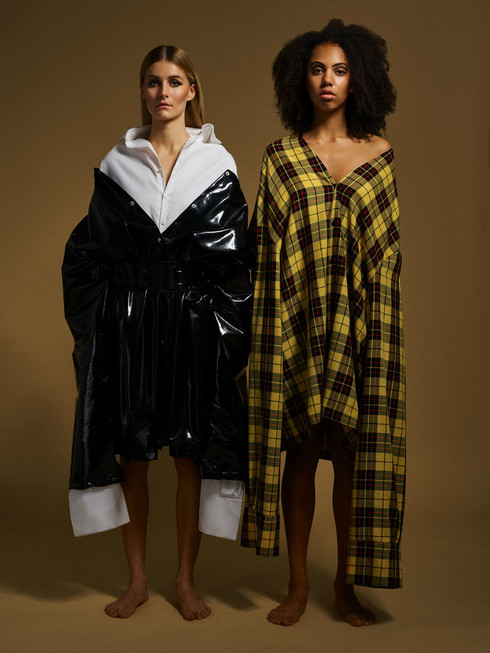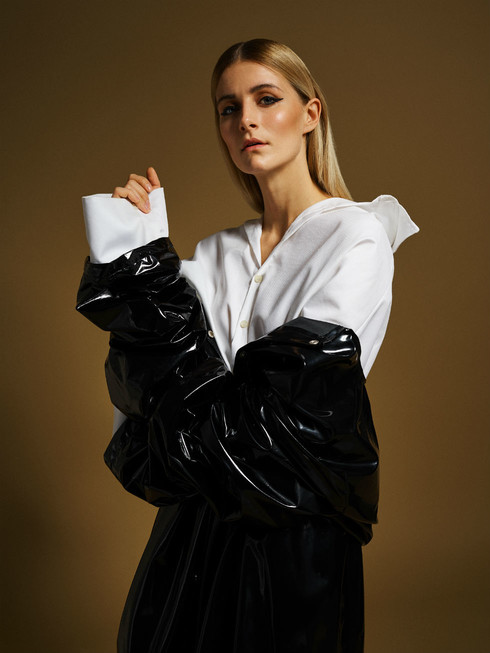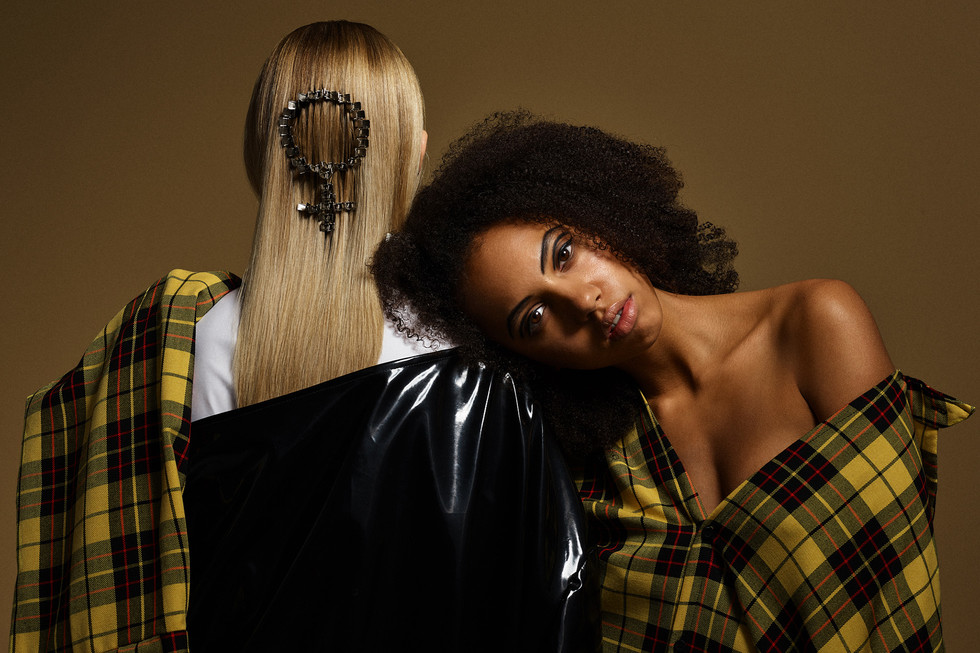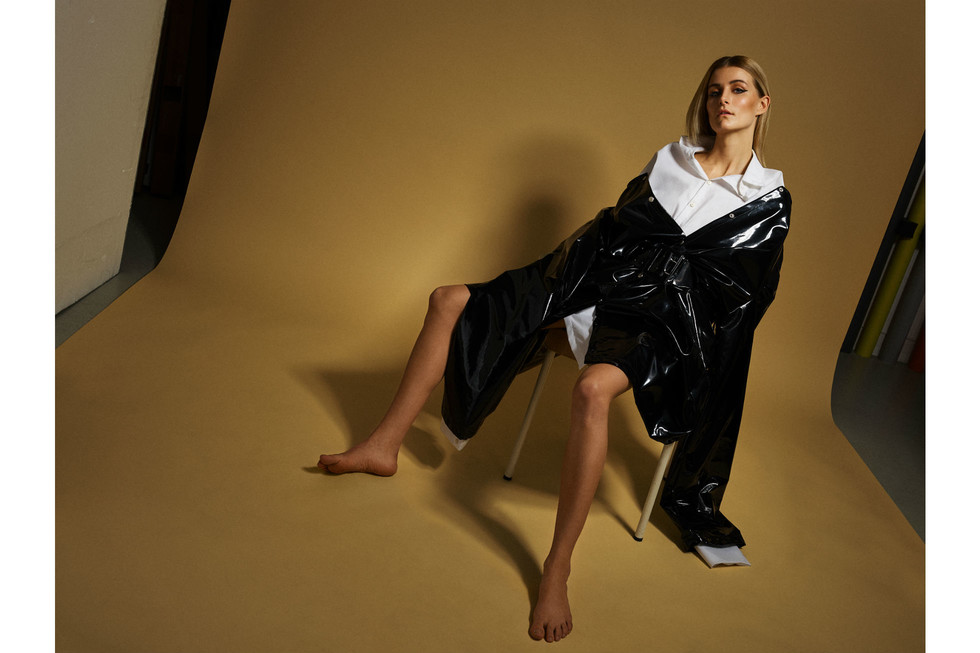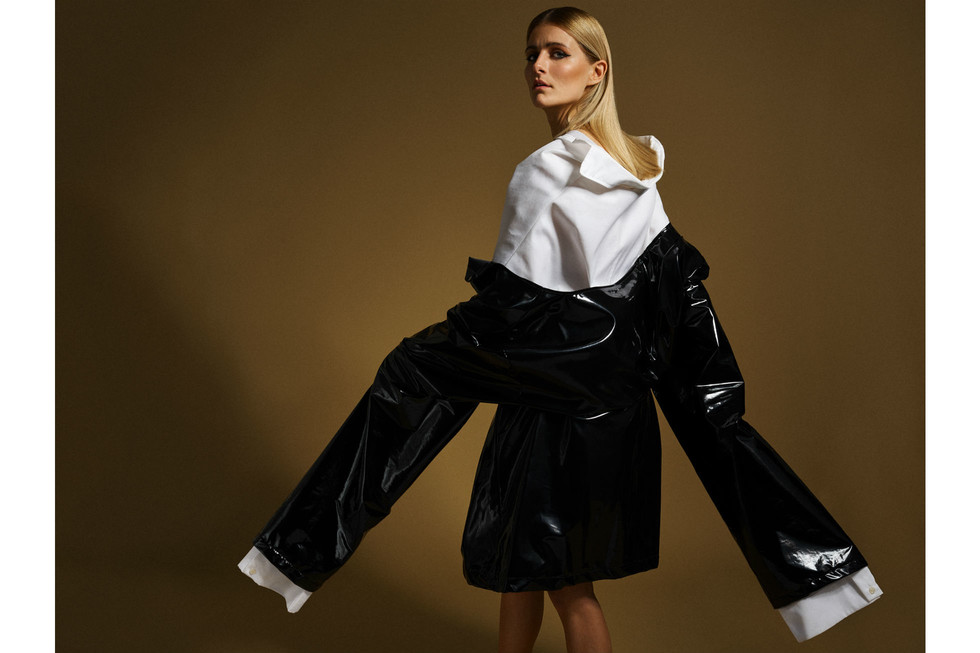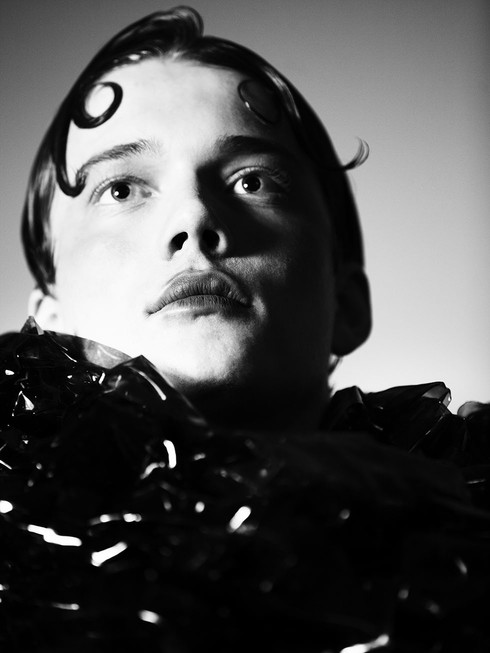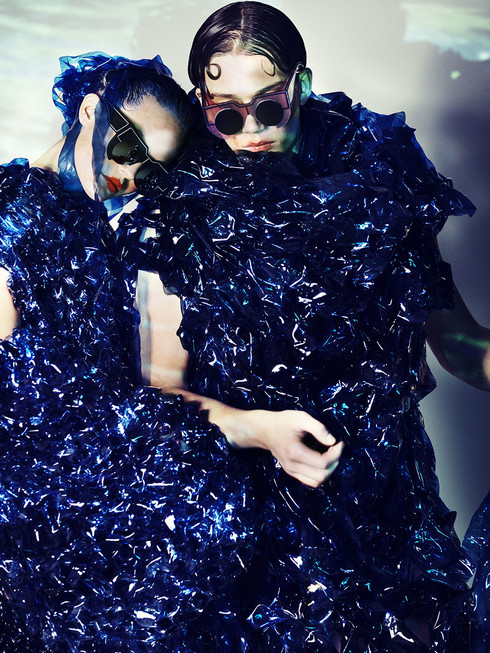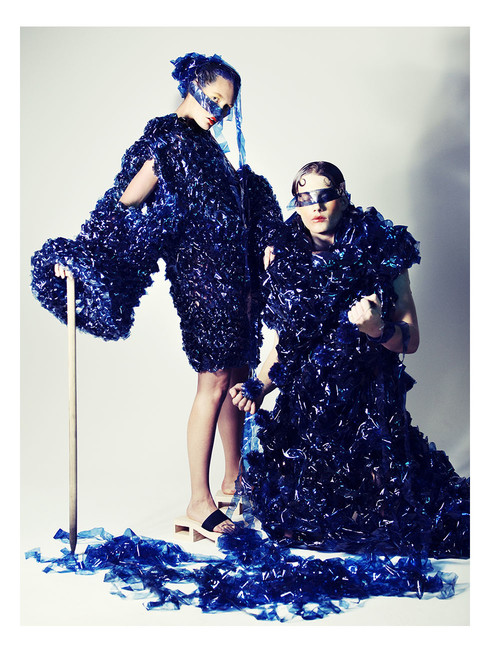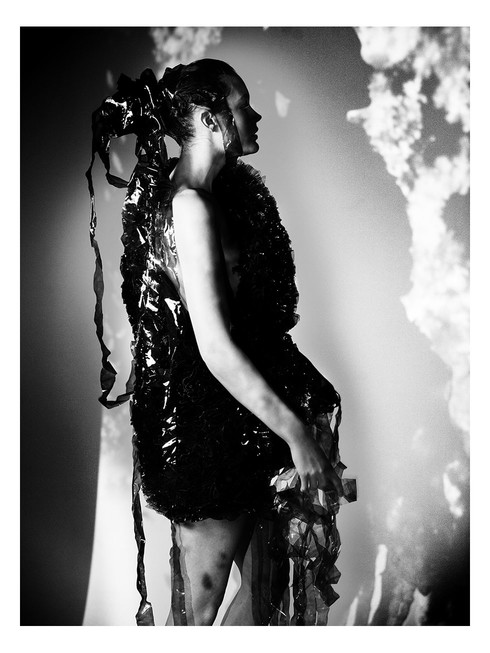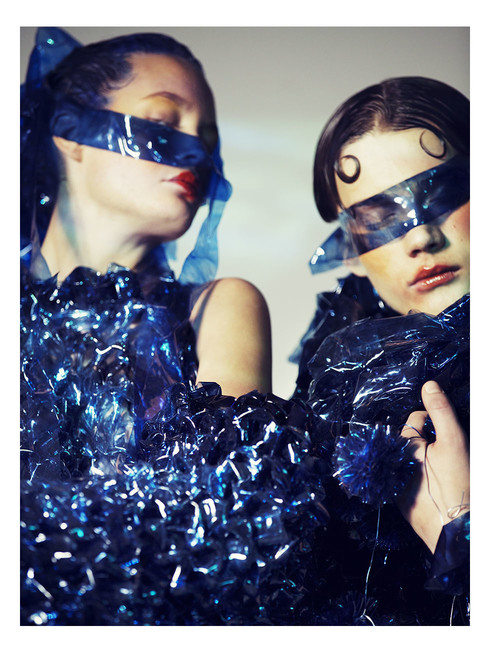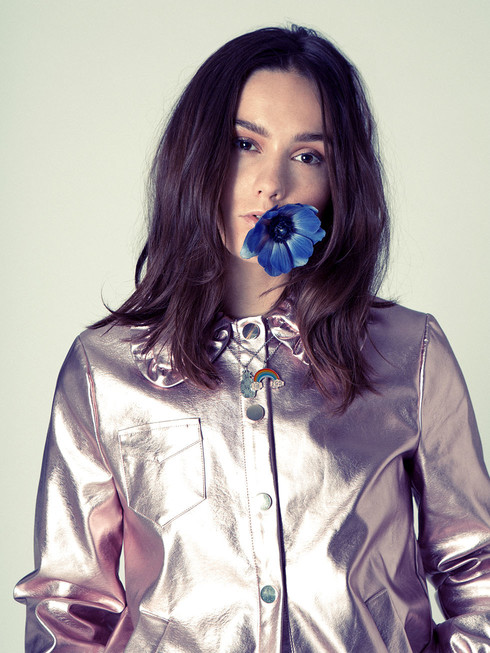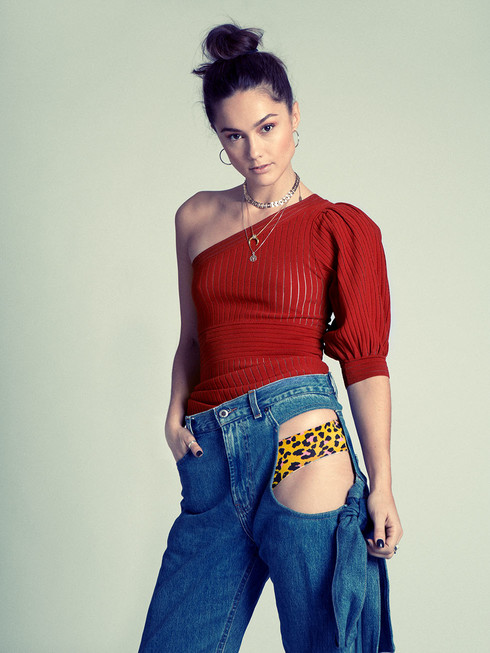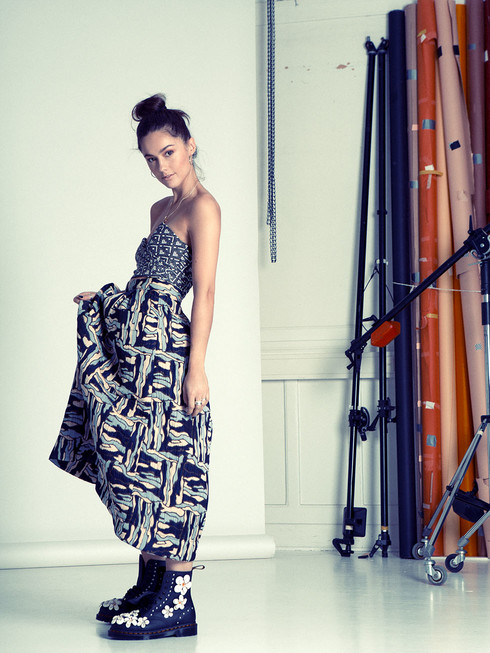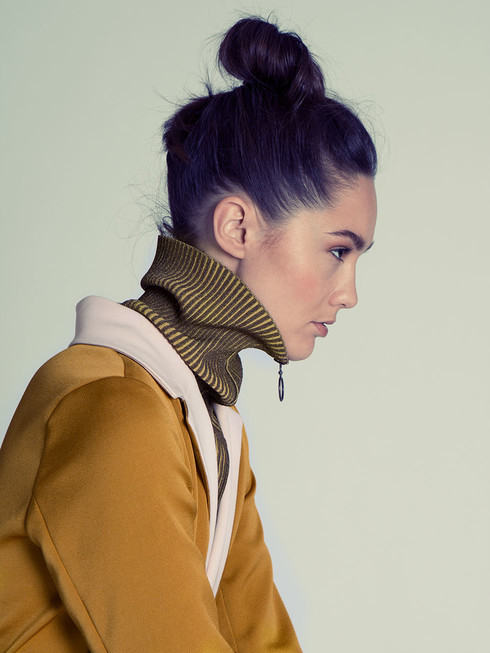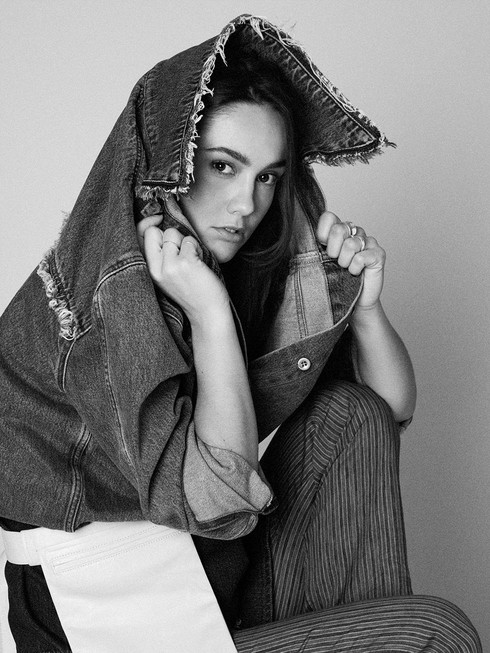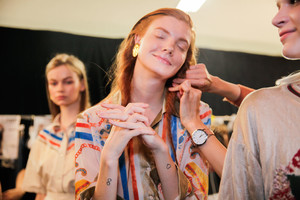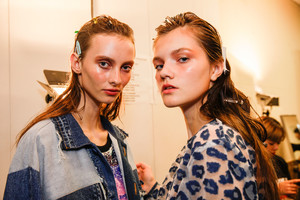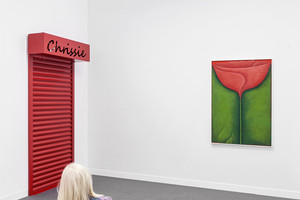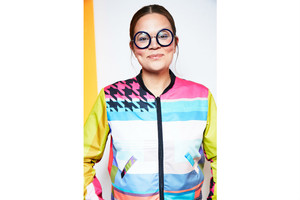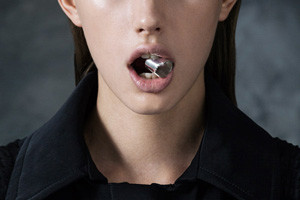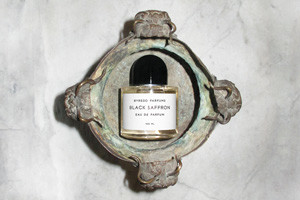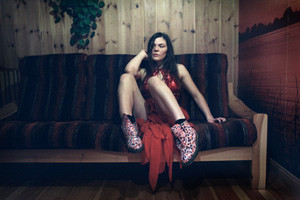Designing is About Creativity, Method and Systematic Decision-making
Written by Ksenia RundinMalin Westman is a last-year student at the Swedish School of Textiles in Borås, who sees her future in the fashion industry and confidently relies on her method, which gives a clear structure to her creative process. We met in Stockholm one Friday in February and talked about fashion and design as they do it in Borås. Malin has in her own way shown me the backstage of fashion, wrapped in a miracle of artistic creativity and covered with anguish of systematic decision-making. You merely devote yourself to it in order to inspire others. According to stylist Chantima Edner, Malin’s collection “Proportions” with its oversized silhouettes leaves the female forms outside by putting those in the beholder’s eyes. Placed into a unique context created by stylist Chantima Edner with her team and eternalised by photographer Tobias Björkgren, Malin’s garments obtain a new life but keep the playful humour of their creator.
Why did you decide to become a designer?
I studied art and media for some time. I always did something creative even before that. Later, after have attended a sewing class, I realized that as a designer you can work with everything, both the form and colour and combine those together with personality and people. Thus, it is a perfect combination of everything.
Have you studied any special form of art?
I studied painting, I painted and did drawings my whole life. However, it is difficult to be an artist. As a designer you have more opportunities and you are still an artist in a certain way using these skills.
Do you consider yourself to be a designer or an artist?
It is difficult to say. I do a lot of artistic work at school, probably more than at any other designer schools. We also experiment a lot.
What made you choose The Swedish School of Textiles in Borås?
I have chosen Borås because it is a very big school with huge studios (workshops) with knitting and weaving machines and large spaces, what you really need in your learning process. When I studied some evening courses at Beckmans College of Design I discovered how small their spaces were in comparison with Borås. Furthermore, the designer education is rather intensive and therefore it is a big advantage to live in such a small city like Borås, where nothing steals your attention like it could be in Stockholm for example. In other words, you are free from any outer stress and temptations. I spend long days at school and we have many deadlines to keep up with.
How is it to live in Borås as a designer? Are there a lot of events happening?
As I said, almost nothing really happens there. You simply go to school and do your work, by devoting yourself to it.
Is there any marketing integrated into your studies?
No, it is concentrated on the creative process without any commercial elements.
What do you communicate with your design?
I always have an element of questioning in what I am doing. Then we are also working a lot with establishing a method in our work. Now I am working on my graduate collection, where I problematize with gender issues and the rest is a secret that far. I enjoy to identify a problem as a basis and build my work methodologically around that and this is something I always do in my collections. One of my previous collections was aimed to question the body and how we create clothes by balancing the proportions of the latter, because clothes are usually made by using a mannequin with generally established proportions. Thus, all the clothes become more or less proportional in the same way.
Do you have a sustainability thought integrated in your education?
The school have sustainability as one of the main directions and we have courses covering the topic. Recently, I did my internship and a part of that was to observe and write a report on how the company I was at worked with sustainability and to suggest any changes if needed.
Do you think fashion has a solution to the consumption hysteria we are living in today?
I think that young designers, those who graduate now, have a tendency to a great extent question the fashion industry as it looks today in a rather humorous way. I do not think that those big clothing chains will move the change forward but those young designers with their alternative approach have good premises to succeed. They are the ones who dare to act, to stand out and question the industry.
What inspires you in your design? What do your refer to?
My inspiration is to identify a problem and criticize it in a humorous way, without having any purpose to perform any bigger change. It is about illustrating the problem and thereby explaining it in an apprehensible way, what actually makes the message come through. I get inspired by new designers on Instagram and Palomo Spain, who is very inspiring, amusing and free at the same time, is my biggest inspiration source right now.
Have you done any collaborations with any design or fashion brands?
Recently, I participated in the exhibition “Ten Textile Talents” at Svenskt Tenn with my own sample of textile printing as a contemporary interpretation of design. I am quite broad in my interests, I like to paint and I like to do many other things. Thus, I sent a sample of my printing and they chose me among other candidates.
Have you decided yet what direction to choose, whether it is a textile design or anything else?
My main direction is a fashion designer but you can also work as a print designer for a fashion brand. This is those two directions I like right now and consider as alternatives but am not sure what the final choice will be like. If I become a print designer, I would rather work for the fashion industry than with furnishing textiles.
So, this is you graduate collection you are working on. Will you have any runway show for that?
Yes, this is my third and last year in Borås. The graduates show takes place at the school in June, sometime in August in Stockholm and finally in London in connection with London Fashion Week in September. The precondition is to complete the collection and to be approved for the last show. It is a long process with qualitative and quantitative stages, where your creativity is continuously questioned and you have to live up to certain expectations. It is extremely stressful process to go through.
How does digitalisation affect your design?
I think we will get more and more machines. Nevertheless, there has to be an idea to everything to be created. Designer as a profession is very much about choices, you have to make choices and decisions all the time. I do not think that the designer will be completely replaced soon, probably in a long-term future.
What is your dream material to work with?
I have worked so much with different materials that now I feel I would like to work with one material in different ways, such as knitting and weaving. I work more with garments and with questioning those, therefore to work with a material as such would be inspiring for me.
Do you feel that fashion are taking more and more of the cultural space now. What are the reasons behind according to your opinion?
I completely agree and I think it depends on the attitude towards fashion which is changing now. People start seeing the cultural and creative potential in fashion and also its communicative quality.
How do you build up your designer identity, your self-confidence as a designer?
It is difficult to say how as I think it is a long-lasting process which occurs naturally. With each new decision, you move a step forward and after sometime you start realizing what you really like and then you can rely on it. It is about to find a suitable method for your creativity that makes you confident.

